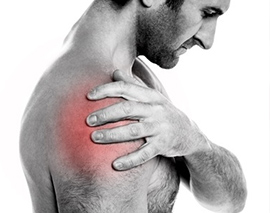
14 Dec What’s the difference between the AC joint and the shoulder joint?
 Kyrie Irving will reportedly be lost to the Cavaliers once again, this time with an acromioclavicular (AC) sprain suffered in the third quarter of Sunday’s game. It was estimated that he would miss three to four weeks of action.
Kyrie Irving will reportedly be lost to the Cavaliers once again, this time with an acromioclavicular (AC) sprain suffered in the third quarter of Sunday’s game. It was estimated that he would miss three to four weeks of action.
For many players, that is an optimistic timeframe, though the accuracy of this prognosis also depends on the severity of the injury (not known as of this writing). However, Irving, who has had a rash of injuries in his short NBA career, has a history of relatively quick comebacks. That may have something to do with being 20 years old!
Cleveland is 8-21 with Irving on the bench, winning just four of 10 this season. With the Cavaliers not headed to the playoffs, it seems pointless to push Irving back on the court for just the final few games of the regular season. It would be understandable were the circumstances different.
It’s better to take a longer view on this one.
As for any sprain, Irving’s injury will be graded from one to three, with a Grade 1 being a mild stretch of the ligaments that stabilize the joint, a Grade 2 causing more significant disruption and a Grade 3 being a complete rupture of the AC ligaments.
The difference between the AC joint and the shoulder joint
The AC joint and the shoulder joint are not one and the same, though they are often referred to interchangeably. Both are a part of the shoulder girdle. The AC joint, or acromioclavicular joint, is the connection between the outer end of the collarbone (clavicle) and the bone that is like a hood over the shoulder joint called the acromion. The acromion is an extension of the shoulder blade (scapula). The shoulder joint (also called the glenohumeral joint) is formed between the upper arm bone (humerus) and its socket (the glenoid fossa), which is also an extension of the shoulder blade. Though the shoulder is the more complex joint, and can therefore suffer a more extensive variety of injuries, the AC joint is also important to the overall mechanics of the shoulder girdle. An unstable (too loose) or restricted (too tight) AC joint can cause pain, a decline in function, abnormal movement and a number of shoulder problems.


